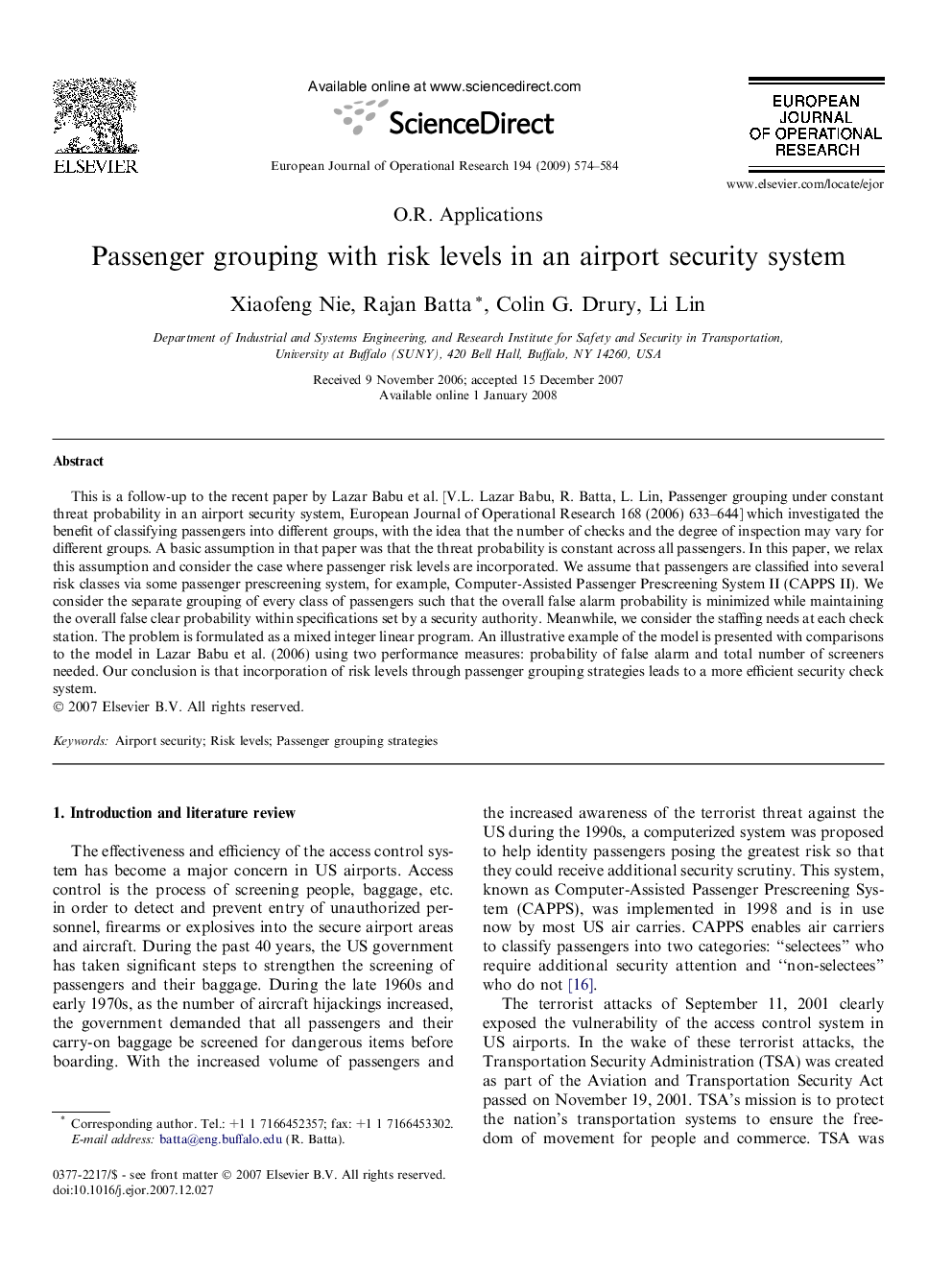| Article ID | Journal | Published Year | Pages | File Type |
|---|---|---|---|---|
| 480961 | European Journal of Operational Research | 2009 | 11 Pages |
This is a follow-up to the recent paper by Lazar Babu et al. [V.L. Lazar Babu, R. Batta, L. Lin, Passenger grouping under constant threat probability in an airport security system, European Journal of Operational Research 168 (2006) 633–644] which investigated the benefit of classifying passengers into different groups, with the idea that the number of checks and the degree of inspection may vary for different groups. A basic assumption in that paper was that the threat probability is constant across all passengers. In this paper, we relax this assumption and consider the case where passenger risk levels are incorporated. We assume that passengers are classified into several risk classes via some passenger prescreening system, for example, Computer-Assisted Passenger Prescreening System II (CAPPS II). We consider the separate grouping of every class of passengers such that the overall false alarm probability is minimized while maintaining the overall false clear probability within specifications set by a security authority. Meanwhile, we consider the staffing needs at each check station. The problem is formulated as a mixed integer linear program. An illustrative example of the model is presented with comparisons to the model in Lazar Babu et al. (2006) using two performance measures: probability of false alarm and total number of screeners needed. Our conclusion is that incorporation of risk levels through passenger grouping strategies leads to a more efficient security check system.
